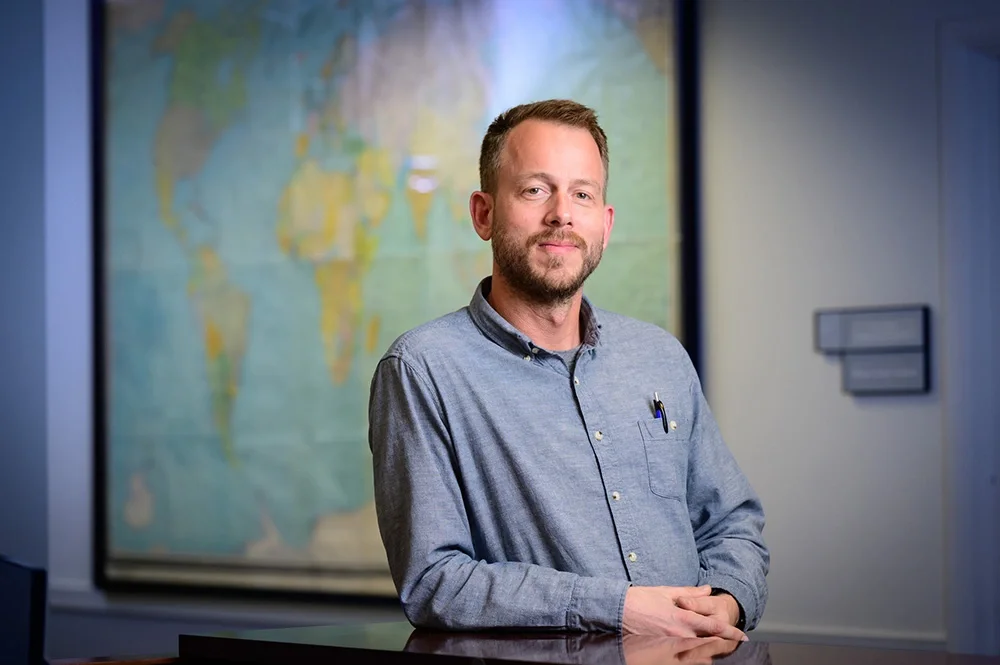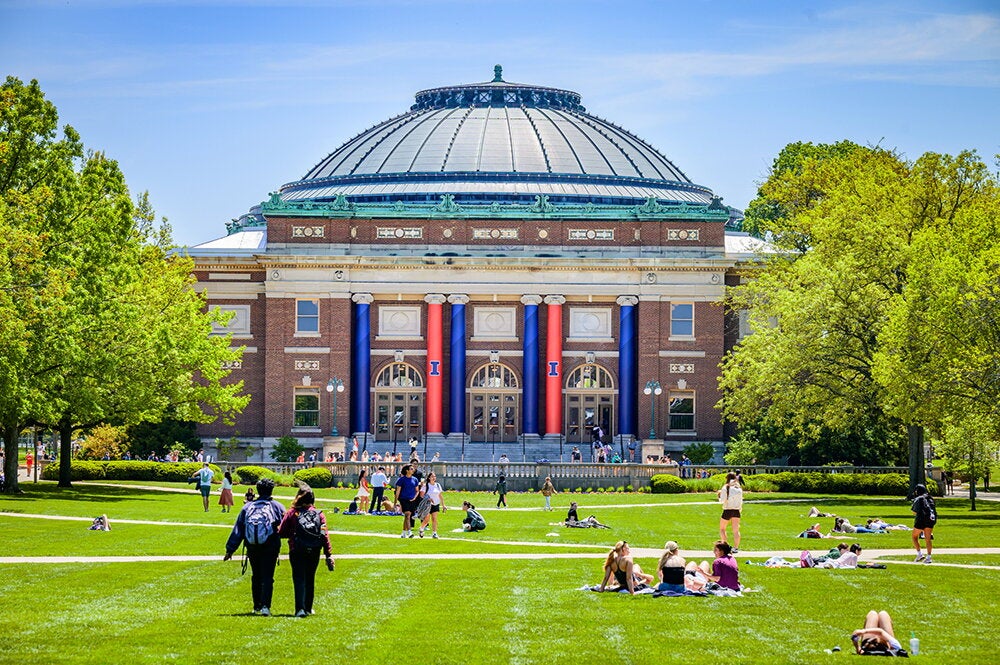

Before President Donald Trump abruptly changed course on tariffs, the 12th smallest African nation, Lesotho, was near the top of the list of countries whose products would be taxed at the U.S. border. Charles Fogelman, a professor in the Global Studies Program and in the Center for African Studies and an expert on the politics of Lesotho, describes how the ever-changing tariff news and the cuts to the U.S. Agency for International Development will affect this tiny nation. He spoke with News Bureau life sciences editor Diana Yates.
Why was Lesotho at the top of the list of countries targeted by the highest new tariffs?
Lesotho was caught in the crossfire on this. The “Mountain Kingdom” is minimally important to the U.S., but as a small, poor country with 2 million or so people, Lesotho is heavily influenced by foreign policy decisions made by the U.S.
Lesotho has benefitted from a Clinton-era law, the African Growth and Opportunity Act, which allowed for American companies to use Lesotho’s textile industry as a manufacturing base. Many firms did, with Gap and Levi Strauss among the most prominent. Some Trump Golf-branded shirts were made in Lesotho. In the mid-2000s, the textile sector employed 50,000 Basotho, the primary ethnic group in the region. Most of those employees were women.
Lesotho’s other main export to the U.S. is the occasional diamond found in the country’s few mines. What this means, in aggregate, is that Lesotho exports about $240 million worth of goods to the U.S. but, because of its size, poverty, and location, Lesotho imports only a tiny fraction of that from the U.S. — goods worth less than $3 million in 2024.
What was it like in Lesotho before these changes?
Since its peak around 2006, the textile industry has been declining in Lesotho. At its height, textile factories employed about 50,000 workers but a variety of factors combined with the COVID-19 pandemic to shrink the sector down to 12,000 jobs. Basotho have lost access to the South African labor market since the end of apartheid. Lesotho also has been hit especially hard by the HIV/AIDS pandemic.
All that being said, too much American coverage of Lesotho focuses on doom and gloom. Lesotho should also be known for the capital Maseru’s vibrant music and fashion scene, for the sense of community and mutual aid in its villages, and for its natural beauty.
Why did Lesotho have such a large trade imbalance with the U.S.?
This is an alarmingly short answer – Lesotho doesn’t really buy anything manufactured in the U.S., save for vaccines and a couple of delivery vehicles. Three million dollars of imports is a rounding error, less than what a backup catcher for the Chicago Cubs is making this season. Beyond geography and national wealth, the imbalance occurs because Lesotho has a manufacturing sector and the U.S. really does not.
And here lies a glaring issue with the tariffs. The U.S. has decided that the trade imbalance should be corrected. It’s unrealistic to imagine Lesotho purchasing more U.S.-made vaccines or delivery trucks, so balance will only be found if Lesotho cuts its exports to the U.S. by 90% or more, which may spell the end of the textile sector and the 12,000 or so jobs it provides.
How did USAID serve the country?
Another sector in which the U.S.’ relationship has been crucial is health. Lesotho has the second-highest HIV prevalence of any country in the world and relies on funding from donor countries to treat people living with HIV/AIDS. USAID’s funding was vitally important in distributing lifesaving antiretrovirals to HIV-positive people, and it was part of a rousing success story. Lesotho recently crossed the United Nations’ “90-90-90” target: 90% of HIV positive people have been diagnosed, 90% of those are on antiretroviral treatment, and 90% of those have their viral load suppressed. This has led to a 75% reduction in annual AIDS deaths since 2005 and an 85% reduction in new cases of HIV.
Those new transmissions are prevented by treatment, education and condom distribution, all of which have been funded in part by USAID. Now that USAID’s funding has dried up, there are already reports of public health agencies closing and people not receiving their medications. Remaining above the 90-90-90 threshold will be next to impossible without another external donor coming in quickly to fill the void left by the U.S.
How is Lesotho responding so far?
In public, Lesotho’s government is being measured and calm. Their acting U.S. ambassador recently called the tariffs “some issues that need to be ironed out between the two friends.” In private, however, friends and colleagues in the country tell me that there is a great deal of anxiety in meetings between the government and the U.S. Embassy in Maseru. In his recent address to Congress, President Trump said “nobody has ever heard of” Lesotho, so the relationship was already growing tense.
AGOA’s survival has been threatened many times before and Lesotho has built contingency plans to deal with its eventual demise, largely by looking toward textile consumers elsewhere in southern Africa and in Europe. More immediately concerning is the scramble to make up for the loss of health care capacity. It has been well over a decade since AIDS was an obvious crisis, with many villages holding multiple funerals a week. There is a real concern that those days could come back quickly and the government is doing what it can to forestall that possibility.
What do you expect will happen in Lesotho as a result of these policy changes by the U.S.?
High tariffs would herald the end of AGOA and the continued shrinkage of Lesotho’s manufacturing sector. I’m not being flippant at all when I say that many people are going to lose their livelihoods if the tariffs go much higher or if the tariff landscape remains unsettled and unpredictable. I also fear that many are going to lose their lives because of the withdrawal of USAID. I have a lot of hope that Lesotho and other countries will pick up much of the public health slack, but so much of the rural healthcare infrastructure relies on USAID funding. It is a concern that both AIDS deaths and HIV transmission will increase and that 90-90-90 achievement will recede into the distance.
Another likely outcome is one that has seemed imminent for years: Lesotho and other poor countries in Africa are likely to become closer to China, whose influence on the continent has grown rapidly this century. There is a certain irony that a U.S. trade policy targeted at limiting China’s global influence seems likely to increase China’s influence in Africa.


